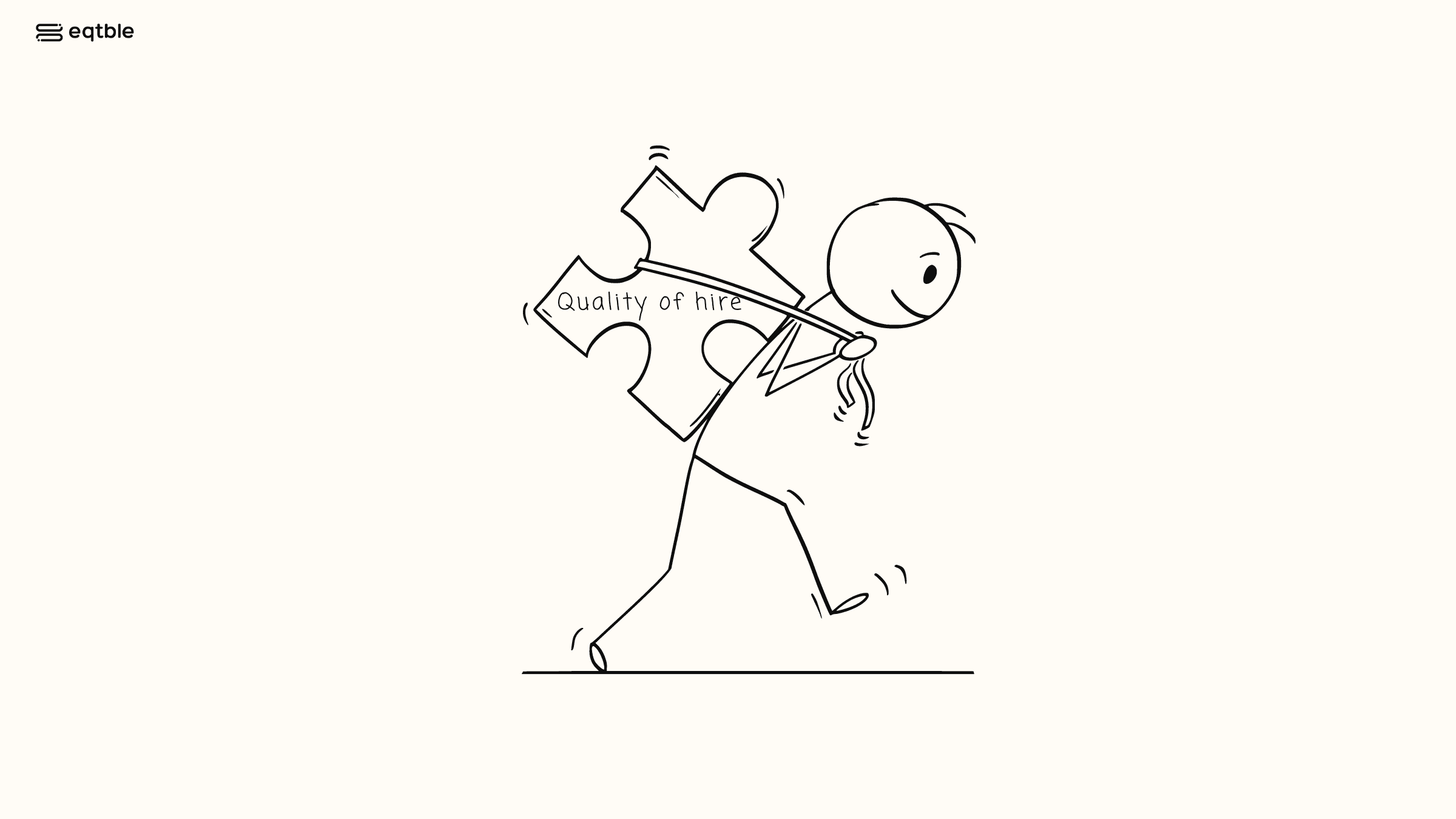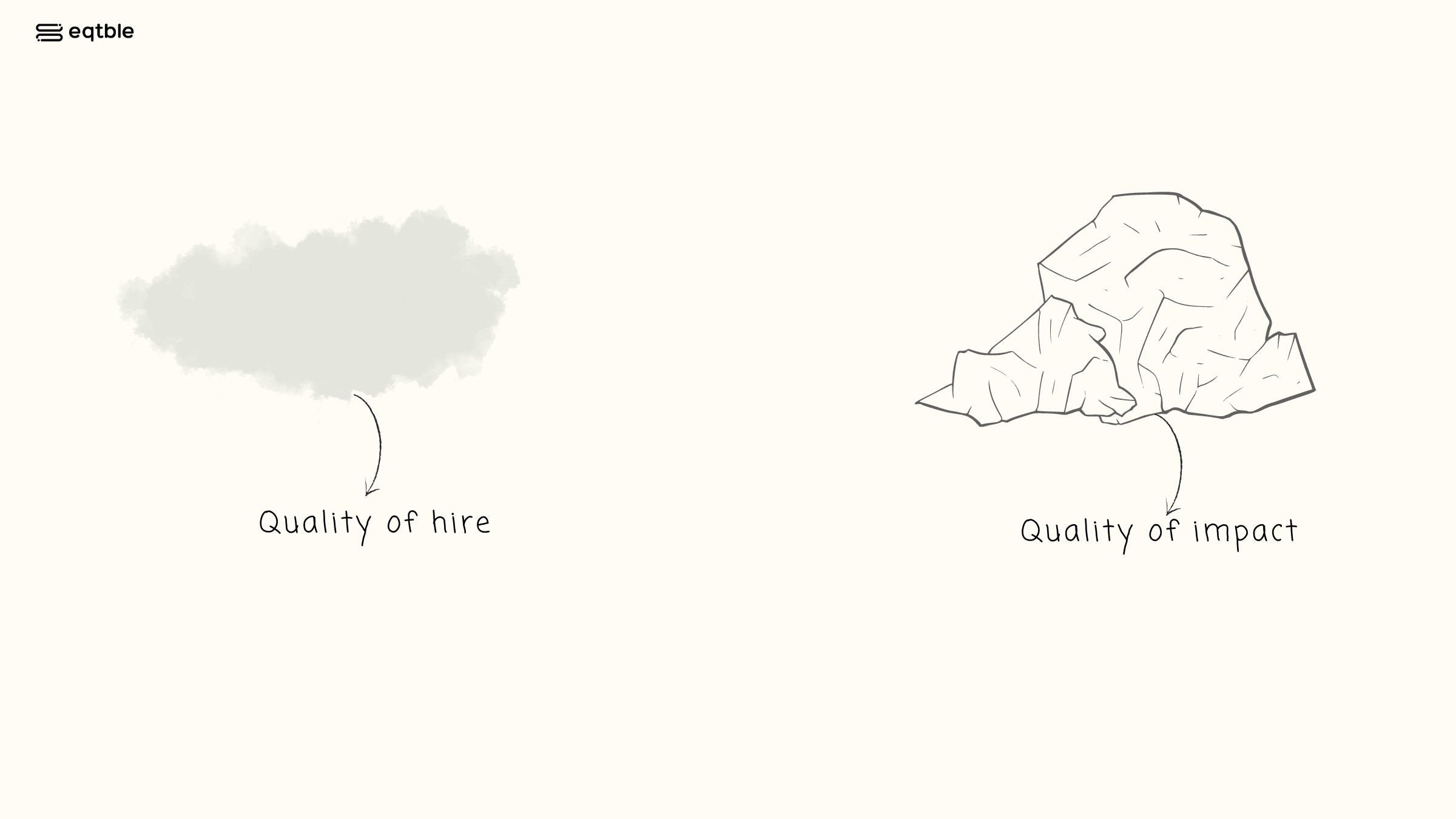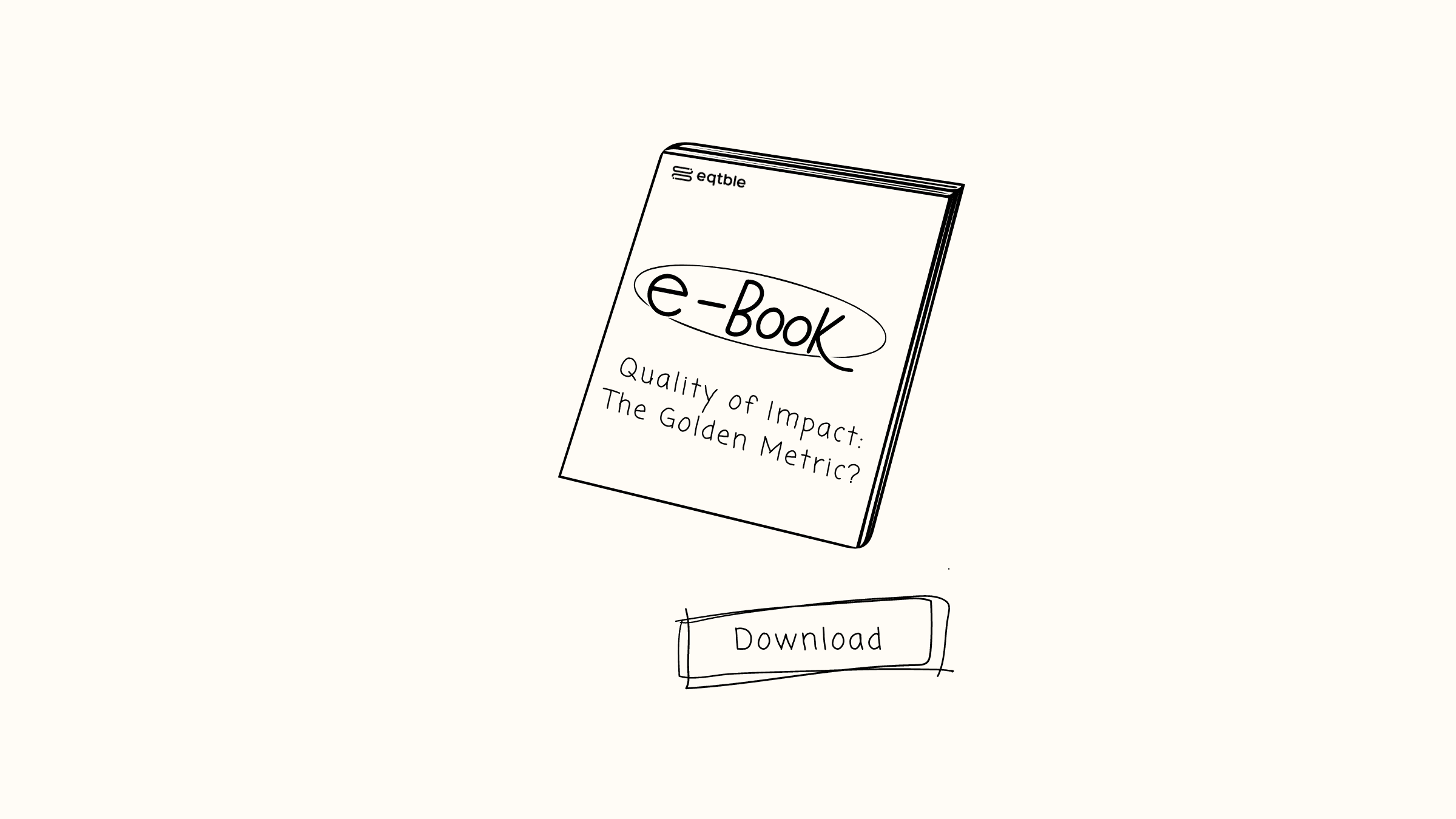HR Analytics
August 11, 2023
From Hiring to Impact: Rethinking the True Measure of Recruitment Success
In the dynamic realm of corporate recruitment and talent acquisition, certain metrics have gained significant prominence over time.
One such metric that stands out is the 'Quality of Hire.' Regarded by many as the crown jewel of recruitment metrics, it's often viewed as a definitive measure of how effective a recruitment team has been in sourcing the right talent.
However, a deeper introspection might reveal a different story. Could it be that the 'Quality of Hire' metric, as popularly used, isn't as conclusive or foolproof as we've come to believe?
The Origin of Quality of Hire

Recruitment, as a function, has seen a transformation over the years. Initially, the focus was primarily on tangible and easily quantifiable metrics such as time to hire, time to fill, and monitoring candidate pipelines.
The rise of HR technology and data analytics tools made it simpler than ever to track these metrics. Recruitment teams could, with relative ease, quantify their efficiency and processes.
Yet, a glaring disconnect persisted.
While these metrics showed efficiency in processes, many organizations faced persistent issues with onboarding the right talent and adhering to hiring timelines.
This inconsistency prompted talent acquisition professionals to seek more holistic measures that would truly reflect the efficacy of their hiring efforts. As a result, the spotlight turned to 'Quality of Hire.'
The Underlying Issue with Quality of Hire as a Standalone Metric

On the surface, the idea behind using 'Quality of Hire' seems straightforward and well-intentioned: Link the recruitment process directly to performance and engagement metrics.
In doing so, recruitment teams could hope to pinpoint either the successes or the discrepancies in their hiring strategies.
However, when we scratch beneath the surface, a more complex picture emerges. Here's a closer examination of the inherent flaw in this approach:
1. Performance Metrics: The Double-Edged Sword
Performance metrics are essential indicators. Still, they're also heavily influenced by factors outside the recruitment process. They measure the efficiency and effectiveness of onboarding, training, development, and learning programs within an organization.
A candidate, once hired, evolves. Their journey from being a new hire to a seasoned employee is heavily influenced by these developmental initiatives. Their success or failure, therefore, might have more to do with how well they were nurtured post-hiring than their inherent quality or fit at the time of hiring.
2. Engagement: Beyond the Recruiter's Control
Engagement is a complex beast. A stellar candidate can be rendered disengaged due to myriad factors post their recruitment: a mismatch with their immediate manager, a stifling work culture, lack of growth opportunities, or personal life changes.
To measure the success of a recruitment drive based on how engaged an employee feels months or even years after being hired seems not just unfair but also a gross oversimplification of what engagement truly encompasses.
3. Environment: The Often-Overlooked Factor
Imagine hiring a top-tier candidate, someone who ticks all the boxes. But then, they are placed under a manager who doesn’t mentor or foster growth. Or, they find themselves in a team that doesn't value collaboration. Over time, this candidate's performance dwindles, their engagement wanes, and they might even leave. Is that a reflection of their quality or the environment they were placed in?
Introducing Quality of Impact (QoI)

Beyond the traditional 'Quality of Hire' lies another critical metric that leading companies are beginning to appreciate – Quality of Impact.
While QoH provides an overarching metric on the employee's perceived value, QoI focuses on the tangible impact an individual has on the organization relative to its goals.
This metric is especially valuable when viewed from a year-over-year perspective, as it paints a clearer picture of an employee's trajectory.
For instance, understanding a high-performing employee's sudden medium impact in a subsequent year can offer insights into potential team fit issues or areas where they might need support.
Also, QoI emphasizes aspects like 'Time to Impact', helping companies gauge the effectiveness of their onboarding processes and the strength of their managerial strategies.
Interestingly, this approach offers a transparent lens, transforming the nature of discussions between managers and their teams.
Constructing a Quality of Impact (QoI) Framework
Understanding the significance of QoI is just the first step. But how do companies create a measurable and actionable QoI framework? Here's a concise breakdown:
Set a clear goal: Start by defining a total project objective or an OKR. For instance, an OKR could be achieving $1m in Annual Recurring Revenue (ARR).
Team's share in the goal: Understand the expected contribution from each team towards the set goal. If we break down our example, this could mean anticipating $500k from the Account Executive (AE) team and $500k from Channel Partners.
Individual contributions: Delve deeper by splitting the team's expected contribution across individual members. In the context of our ARR objective, this translates to expecting $100k from each of the 5 AEs and $250k from each of the 2 Channel Partners.
Evaluate actual contribution: At the end of the period, measure the actual contributions made by each individual. This will give a clear picture of the produced amount by every team member against what was expected.
Arrive at the QoI score: Based on the set expectations and actual outcomes, derive a QoI score. This score reflects the effectiveness and impact of each individual within the specified frame.
The beauty of this framework lies in its applicability across various roles and industries. Whether you're gauging the performance of a software developer based on lines of code or assessing a sales executive by the number of deals closed, the QoI structure offers a reliable metric.
If you are intrigued by the nuances of Quality of Impact and its advantages over traditional metrics, we've explored this concept in-depth in our eBook, "Quality of Impact: The Golden Metric?" by Jeremy Lyons. It offers a comprehensive look at how QoI can guide retention conversations and inform better recruitment strategies.

The Way Forward
The argument isn't against measuring the quality of hires. It's an essential metric, but it shouldn't be isolated from the ecosystem in which the hire operates. Instead, organizations should approach it holistically, understanding that while recruitment lays the foundation, the true test of a hire's quality is how the organization nurtures, challenges, and grows them.
To single out 'Quality of Hire' as THE definitive measure of recruiting success is to overlook the intricate tapestry of factors that shape an employee's journey in an organization. It's time we broaden our horizons and reevaluate the metrics we hold dear. After all, in the complex world of talent acquisition and retention, isn't it time we see the forest for the trees?
Read case study: How Toptal Streamlined Recruitment Analysis Using eqtble







